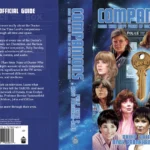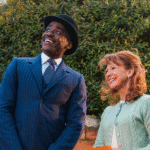Continuity – and retro continuity – have long haunted Doctor Who. Throughout the 1960s the only constants were the Doctor, the TARDIS and occasional appearances by the Cybermen and the Daleks. The majority of monsters were new and one-offs, never to be seen again. The Ice Warrior’s emerged from this period too, but on the whole calls to the past were rare.
The 1970s, of course, saw the introduction of yet another new brand of foe – the Time Lord nemesis the Master, as well as the clone race the Sontarans. But again, on the whole, stories were one-off adventures, with returning aliens being saved only for worthy tales. The Cybermen, for instance, vanished entirely for 6 years between 1969 and 1975, and of course the Dalek story was completely rebooted with Genesis of the Daleks. There was very little in terms of continuity other than the introduction of the Time Lords as a much-needed enhancement to the Doctor’s own backstory.
Fast-forward to the 1980s to have a look at the crimes committed in the name of continuity – revising the Cybermen not only in appearance but in character and indeed even revising a previous story (The Tenth Planet) not by developing the themes but by merging the tale with a new one! Meanwhile the Capitol on Gallifrey, where the Time Lords could be found, turned into nothing more than legal chambers. While it had been an entertaining juxtaposition that the most powerful race in the galaxy should sit at desks observing time, the idea that they do so from nothing more than ornate offices is absurd.
And still it got worse – endless returns by the Daleks and Cybermen, a wave from the Sontarans, the Brigadier (only called upon when actor William Russell who played Ian Chesterton from 1963-1965 was unavailable for the story Mawdryn Undead) and even the Second Doctor and Jamie all played a part in the continuity fest that was Doctor Who in the 1980s.
The Virgin New Adventures – launched in 1991 – were also guilty of some retro-continuity crimes, as was the US co-produced TV Movie starring Paul McGann in 1996. So why, then, did Russell T Davies – in light of all of these pretty much atrocious attempts to integrate contemporary Doctor Who into its own history – bring back Sarah Jane Smith and K9 in the Tenth Doctor story School Reunion?
Ostensibly, Davies wanted to show not that this was the same show and the same character, but to show to Rose that the Doctor had had many companions of which she is just the latest. However I would contend that Sarah Jane and K9 – as well as being two of the Doctor’s best loved friends – were performing a critical role in the development of the Doctor’s character. Sarah Jane’s presence not only showed us and Rose that the Doctor is a collector of attractive young human females – a trait further underlined in the subsequent episode The Girl in the Fireplace – it also revealed exactly why he leaves them in the end.
The presence of K9 meanwhile is another matter entirely. Futuristic in 1977, the tin dog now looks like an upturned skip with wheels. As manoeuvrable as a brick, and seemingly falling apart during the shoot (and this was a new model, apparently!) the third incarnation of the Doctor’s most faithful companion seems only to fulfil two roles – defeat of the Krillitane, and a final parting gift to Sarah Jane in his repaired form, perhaps underlining that the Doctor has a particularly special place for Sarah Jane Smith in his hearts.
All-in-all, RTD has proved that you can rely on elements from the show’s past without a detrimental effect. This however isn’t an original idea. The Virgin New Adventures, the later BBC Books Eighth Doctor Adventures and Big Finish have all toyed with continuity to varying effects. BBC Books even famously destroyed Gallifrey several years before Davies got hold of the toys.
However, whether or not elements from the past can be used or not is only half of the question. We should also be looking not only into whether they should be used, but also why we feel the need to include them, and which ones are included and for what reason. For instance, why have the Rutan race never made a reappearance? Or indeed, the Draconians? What reasoning was behind the return of the Sea Devils and Silurians in 1984’s Warriors of the Deep? Neither race had been seen for over ten years, surely too long a gap to crowbar continuity references into?
The return of Sarah Jane Smith and K9 – as played by the original actors, Lis Sladen and John Leeson – was a brave step for new Doctor Who to take. The whole issue of pointless nods to the past is one which can be avoided with well-written, intelligent scripts that neither expect too much of an audience nor treat them like fools. But a return of recurring characters last seen over 20 years previously underlines the shows heritage, those characters place in the series, their place in Doctor Who fan culture and ultimately in the iconography of the show. The parallels between Sarah Jane and Rose are there for all to see in School Reunion which makes the friction between them all the more amusing. They are essentially the same – feisty, trusting and in awe of the Doctor, but not so much that they let him talk down to them.
School Reunion was a success in terms of reintroducing those old elements, ones that it could be fair to say no one expected to ever see again. Realistically, the Doctor is more likely to bump into his older companions than his earlier incarnations – one result of the Time Lords’ destruction that we should be thankful for. There’s no reason why other older companions shouldn’t turn up at some point – although ultimately that trick has been done. Perhaps we should just be waiting for the return of a 47 year old Billie Piper to encounter the 15th Doctor…
Discover more from Kasterborous
Subscribe to get the latest posts sent to your email.









